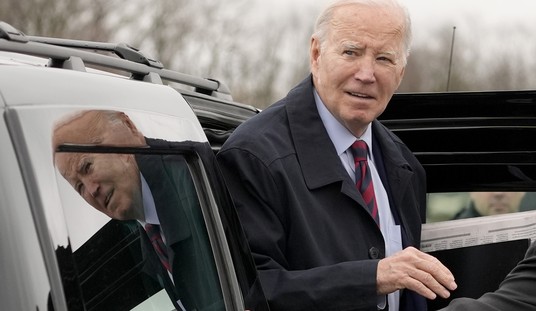Mrs. Obama has touched a national nerve with her campaign. There is broad general agreement that childhood obesity has reached epidemic proportions in America; Dr. David Ludwig of Children’s Hospital Boston calls it a “tsunami” of childhood obesity.
According to the Journal of the American Medical Association (JAMA), the rates for childhood obesity have tripled during the past three decades. Because of obesity-related health issues — such as high blood pressure, heart disease, stroke, and diabetes — researchers conclude that life expectancy over the coming decades could decline by two to five years. Among health professionals, there is genuine concern that the social, economic, and human behaviors that have contributed to the childhood obesity epidemic threaten long-term “medical, psychosocial and financial consequences” beyond America’s capacity to respond.
Overweight kids have become an all-too-common reality. Numerous sources estimate that approximately 40 percent of American children are either overweight or obese; the obesity rate for young children (ages two to five) and youth (ages twelve to nineteen) tripled, and for older children (ages six to eleven), the obesity rate quadrupled. That’s about 110 million children now classified as overweight or obese.
Recommended
At the root of childhood obesity are two connected problems: At the same time that children are consuming more “empty” calories, they are also getting less exercise. Many factors have combined to foster a more sedentary lifestyle, even for children. In many communities, children are not allowed to walk or ride bicycles to school. Many schools have eliminated recess and physical education from the school day. At home, the children are watching more television and playing video games for longer and longer amounts of time during the day.
Numerous experts in the fields of pediatrics and public health have identified advertising, especially television advertising, as one of the “most pernicious” factors driving the alarming increases in childhood obesity. In fact, the Institute of Medicine found that there is strong evidence that television advertising of foods and beverages has a direct effect on what children choose to eat. Children aged eight to twelve years old see the most television commercials (twenty-one per day, fifty-one hours per week). Kids thirteen to seventeen years old see seventeen ads per day in forty-one hours per week of viewing, and even youngsters ages two to seven see twelve food ads per day, or thirty hours worth. Most of these ads (34 percent for candy, 28 percent for cereal, and 10 percent for fast food) are for junk food, only four percent are for dairy products, and one percent for fruit juices.
With at least 300,000 deaths per year and $100 billion in economic costs per year, Americans must come to grips with the problem and find a solution.
At the outset, we must recognize the connection between the breakdown of the family and childhood obesity. Writing in Pediatrics, Dr. David Wood chronicles the connection between the phenomenal increase in the number of single-parent, female-headed households and the rising number of poor children and children who are unhealthy and have poor nutrition — which could influence the dramatic increase in the number of children who are overweight or obese.
While obesity organizations have stopped referring to “the national retreat from family life” as an influence in the trends toward obesity or to the “rarity” of the homemaking mother as a reason for the “frequency of fast-food eating” among American families, they do encourage the family to work together toward good nutrition. They try to persuade families to sit down together over dinner rather than grab fast food to eat in the car coming home from work after picking up the kids at school or day care. The American Obesity Association (AOA) recommends that parents and children re-establish the practice of “preparing food together” so that “children can learn about healthy cooking and food preparation.” They encourage eating at regular times, without other activities such as television occupying the family’s attention and without rushing through the meal. They recommend limiting fast-food eating to no more than once a week.
USA Today reports that the America on the Move Foundation found that 71 percent of children get information about how to be healthy from their mothers, while only 43 percent get that information from their fathers. One school authority recalled a situation in which a preschooler accompanied his mother when she came to the school for a consultation with a teacher: “The little boy was carrying his breakfast: a bag of Cheez Doodles and a sugary soda. The mother explained that she was running late and they didn’t have time for a meal.”
There is a lot of optimism among pediatric health personnel. Dr. Mark Jacobson, a member of the American Academy of Pediatrics’ task force on obesity, believes that the problem of childhood obesity can be reversed, because it is now finally on “everybody’s radar screen,” and because there has been a “huge outpouring of commitment from schools, government, public health agencies, private industry, medical groups and parents.”
My experience has led me to a different view. There is an abundance of symbolic action, but few people or organizations are taking substantive or effective actions. Sadly, we are a long way from agreement about the best way to address the issue of childhood obesity. Focusing on the symptoms of obesity rather than the underlying causes — breakdown of family and the dominance of negative cultural influences — is undermining our kids’ health and our national well-being.
























Join the conversation as a VIP Member